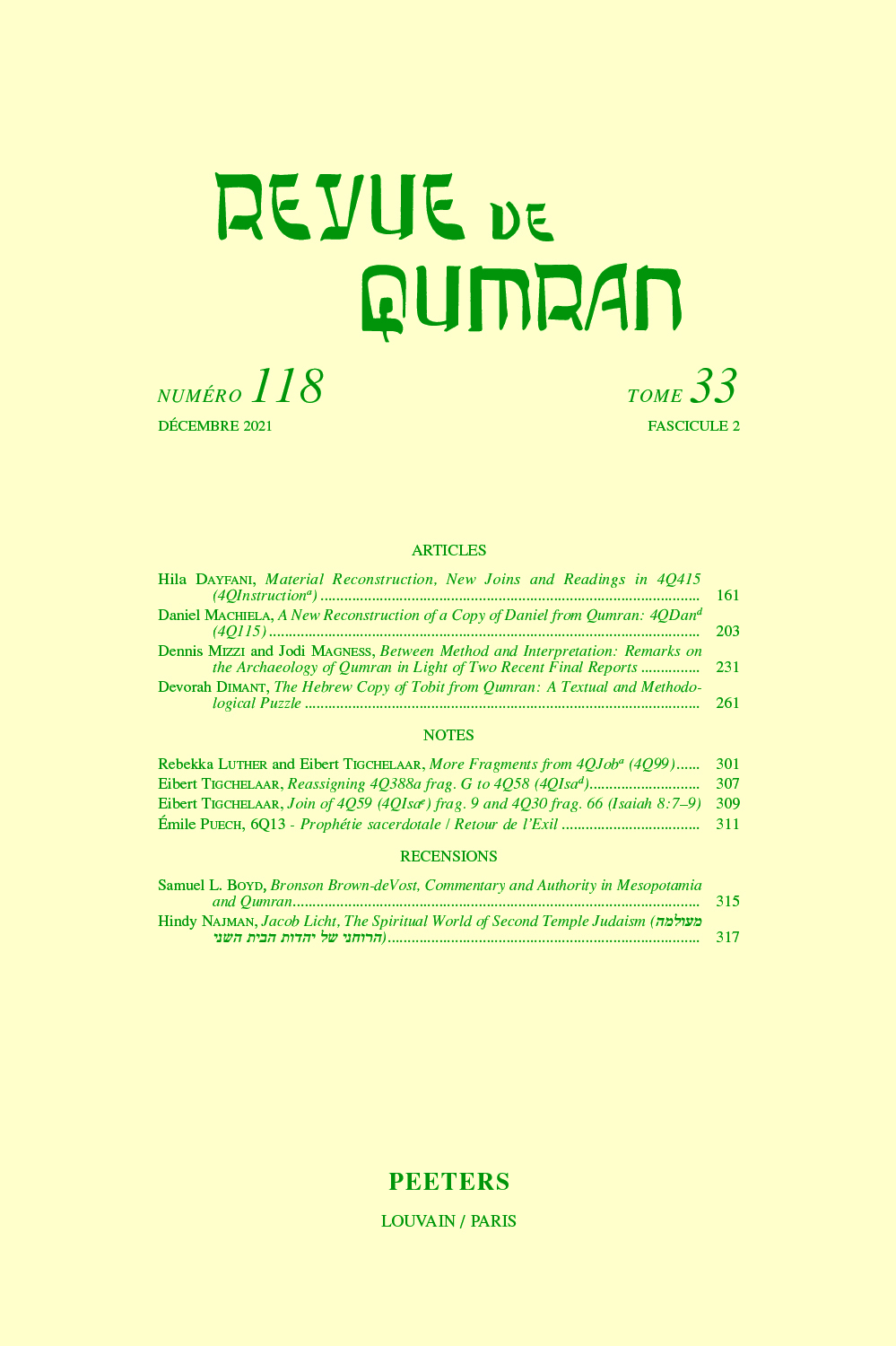 previous article in this issue previous article in this issue | next article in this issue  |

Preview first page |
Document Details : Title: Reconstructing the Calendar of 4Q208-4Q209 (and a Response to Eshbal Ratzon) Author(s): JACOBUS, Helen R. Journal: Revue de Qumran Volume: 31 Issue: 2 Date: numéro 114, 2019 Pages: 251-273 DOI: 10.2143/RQ.31.2.3287242 Abstract : This study mathematically reconstructs 4QAstronomical Enocha-b ar (4Q208-4Q209) in detail. The findings challenge the recently proposed reconstruction of 4Q209 by Eshbal Ratzon as a full triennial cycle (with a synchronized lunar and solar year), known from the Judean Hebrew calendrical texts found in Qumran (in contrast to Milik’s proposal that the texts represented the first year of a triennial cycle). This reconstruction demonstrates that the Aramaic fragments more accurately match one single synchronized year which is not connected with a triennial cycle. It identifies the placement of certain fragments containing relevant data according to a scheme founded on contemporaneous ancient astronomy in the region and that of another Qumran Aramaic calendrical text. The study finds that the Aramaic calendar of 4Q208-4Q209 should be analyzed on its own terms. Cette étude reconstruit mathématiquement 4QAstronomical Enocha-b ar (4Q208-4Q209) en détail. Les résultats contestent la reconstruction proposée récemment par Eshbal Ratzon du 4Q209 en tant que cycle triennal complet (avec une année lunaire et solaire synchronisée), connue des textes calendaires hébreux de Judée trouvés à Qumran (contrairement à la proposition de Milik selon laquelle les textes représentaient la première année d’un cycle triennal). Cette reconstruction démontre que les fragments araméens correspondent plus précisément à une année synchronisée unique qui n’est pas liée à un cycle triennal. Il identifie l’emplacement de certains fragments contenant des données pertinentes selon un schéma fondé sur l’astronomie ancienne contemporaine de la région et sur celui d’un autre texte calendaire Qumrân Araméen. L’étude conclut que le calendrier araméen du 4Q208-4Q209 au devrait être analysé selon ses propres termes. |
|


